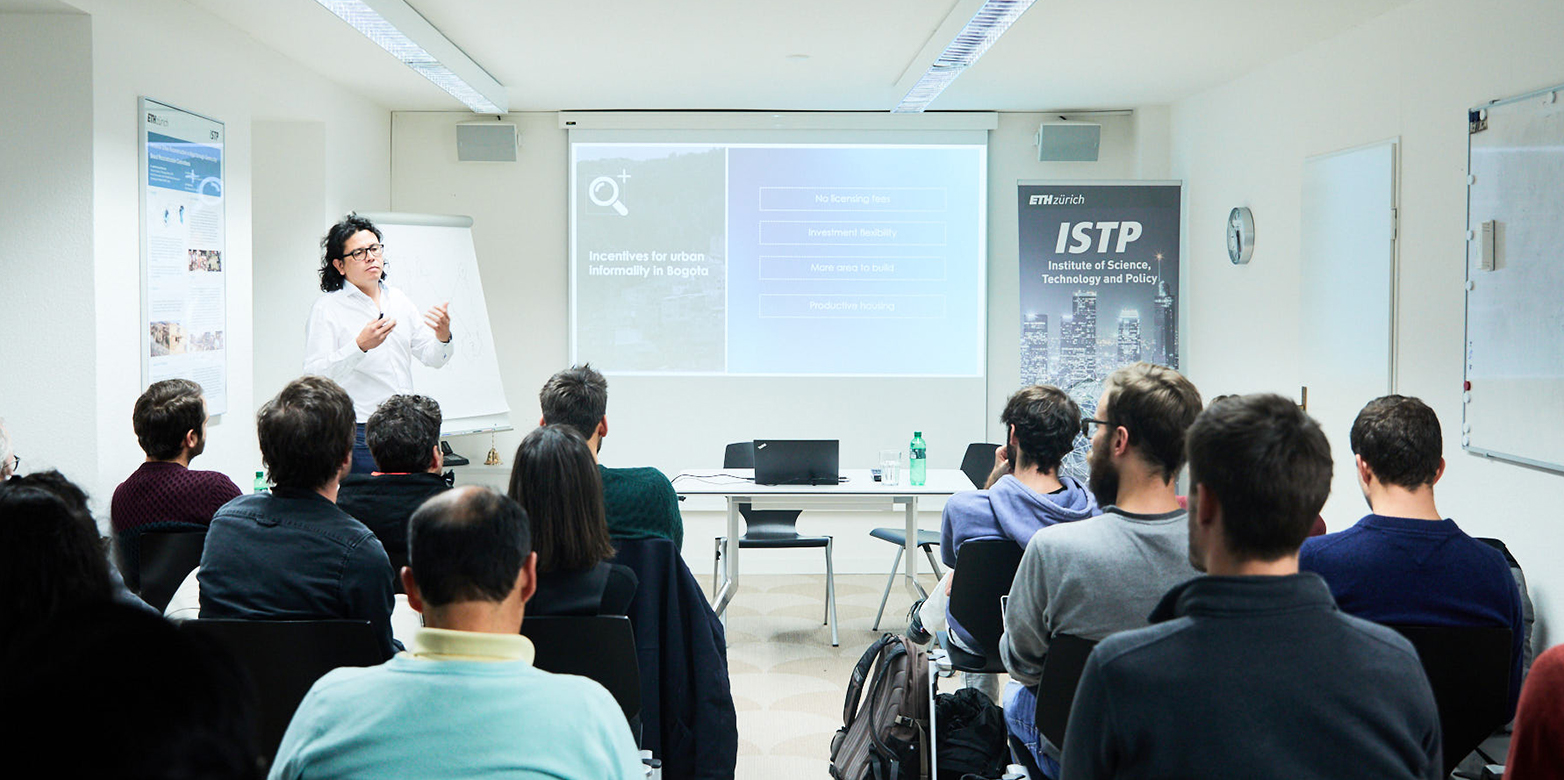Street Art and Urban Planning: The case of informal settlements in Bogotá
We would like to warmly thank Andrés Sepúlveda, urban planner for the Department of Habitat of Bogotá and lecturer of urban development at the El Bosque University in Bogotá, for his visit at ISTP and his talk about the use of street art as an urban planning tool in the case of informal settlements in Bogotá.
by Niklas Stolz

Being a city with 7.15 million inhabitants, of which 2.2 million live in informal settlements, brings a lot of challenges in the field of social and urban regeneration. To tackle those issues, the city of Bogotá has been using street art as a tool for engaging with communities and rebuilding trust in the municipality. During his talk Andrés Sepúlveda shared insights from the implementation process and possible outcomes of street art projects in informal settlements in Bogotá.
During the current administration, the Department of Habitat of Bogotá has implemented the programs Habitando and Habitarte. The goal of those programs is the social inclusion of inhabitants of informal settlements and bridging the gap between the informal and the formal city. While Habitando is aiming to support local grassroot organizations with an emphasis on culture and art, Habitarte aims to enhance neighborhoods with street art. Experience has shown that painting houses needs to be followed up by further programs, but can be a valuable step towards strengthening the social fabric and promoting participatory processes within communities. Furthermore, these interventions help rebuilding trust of citizens in the municipality and help the municipality to understand the social dynamics of the communities. A key element of the programs is the participatory process of the communities in all decisions. The community has the decisive power of choosing motives and colors for the paintings. The project also gives citizens the opportunity to visit workshops and learn relevant skills for the job market. The transparent process and the education programs are essential in order to prevent the criticism of only painting the poverty in order to hide it.
As one of the most prominent examples Mr. Sepúlveda showed impacts from the intervention in La Mariposa, where a butterfly was painted over the entire neighborhood. Surveys in the community indicated that after the intervention the perceived frequency of drug use and gang activity decreased, while the likelihood that an inhabitant wants to keep living in the community increased.
The ISTP would like to thank Mr. Sepúlveda for giving such an interesting insight into the use of street art in Bogotá. We hope to welcome him again at ETH Zurich in the near future!
To get a broadened sense of the ISTP and our topics of interest and past seminars visit our Colloquium page